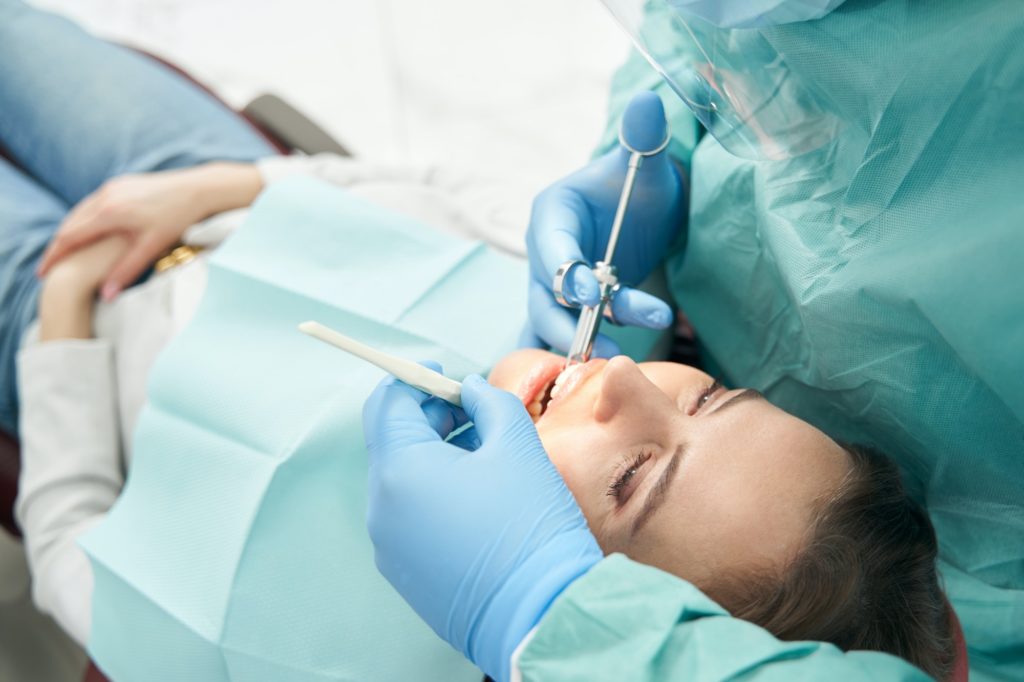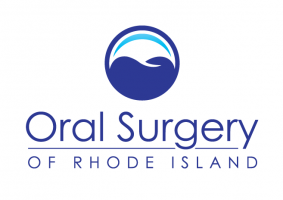Sedation Dentistry
Many people avoid going to the dentist because they experienced traumatic care as a child, suffered painful procedures as an adult, or are influenced by the stereotypes they see on TV and in movies. Sedation dentistry can be a good choice for people with dental phobia.

At our office, we understand dental phobia and want to help. Whether you just need a routine cleaning or a brand-new smile, we offer sedation dentistry to make your experience comfortable and relaxing.
Sedation Dentistry is a Path Free from Fear!
Sedation dentistry is used by many dentists to provide a relaxing, calming experience for patients who are afraid of going to the dentist and/or having dental procedures performed. There are many forms of sedation that can be administered in a variety of ways offering us the flexibility of three levels of sedation – minimal, moderate, and deep – depending on the level of anxiety the patient experiences.
Oral Sedation
Our office offers oral sedation dentistry. Oral sedation dentistry allows us to relieve anxiety without the use of needles or intravenous tubes. Additionally, patients who traditionally have trouble getting numb have no problem when sedated and relaxed.
About an hour prior to the appointment, the patient will be asked to take a small pill that will make he/she drowsy. By the time a companion accompanies the patient to our office for the appointment, the patient will be feeling relaxed and calm. We will escort him/her to a comfortable room and cover him/her with a warm, thick blanket.
Once the patient is comfortable and completely relaxed, the doctor and experienced clinical team will complete the dental procedure. During the entire procedure, the patient’s vital signs will be monitored to ensure their health and safety. After the treatment is completed, the companion will take the patient home to rest and sleep for a couple of hours after the appointment.
Intravenous (IV) Conscious Sedation
IV Conscious Sedation is an effective technique for managing moderate to severe dental anxiety. While not as readily available in most dental offices, we believe it is a valuable tool for ensuring a patient’s complete relaxation during a procedure they would not ordinarily have done due to extreme fear.
Prior to the procedure, drugs are administered intravenously. Drugs administered by IV are far more effective than those taken orally because the doctor can control exactly how much is administered directly into the bloodstream.
During the procedure, monitoring devices are placed on the patient to monitor their heart rate, blood oxygen levels, blood pressure, and breathing. The patient will be awake through the whole procedure, allowing the dentist to give them directions, which they will be able to follow. However, the medications administered during IV conscious sedation leave the patient with amnesia of the procedure. The patient will remember nothing about their experience!
In order to provide IV Conscious Sedation dentistry to our patients on a per need basis, we will arrange for a certified state Board of Dental Examiners approved dental anesthetist to be available for the appointment.
Nitrous Oxide (N20)
Nitrous oxide has been a mainstay of sedation dentistry for decades and is still the most frequently employed sedation technique today. Commonly known as “laughing gas”, nitrous oxide is used by more than 35% of all U.S. dentists.
Nitrous oxide is commonly used because within 5 minutes of inhaling the colorless, odorless gas pain is neutralized and a euphoric feeling spreads through the body. Within minutes, the dental procedure can begin and the patient will be completely relaxed. Nitrous oxide allows the dentist to alter the depth of sedation from minute to minute, making the experience pain and fear-free.
After the gas is stopped, the patient will return to normal within minutes. You will be able to safely drive yourself home and will not need an escort. Nitrous Oxide does not require the use of a needle, so those who are afraid of needles will benefit from this form of sedation. And, nitrous oxide is very safe; there are relatively few side effects and the drugs have no effect on the major organs.
Local Anesthetic
For certain dental procedures, your dentist will need to numb parts of your mouth. In order to do so, medicine is injected into your gum or inner cheek. This medicine is called a local anesthetic.
Lidocaine is the most common local anesthetic used in dentistry, however, there are many others. All types of numbing drugs are combined with other medications to make the numbing last longer. Numbing usually lasts several hours but wears off over time.
Numbing just the area where dentistry needs to be performed allows the dentist to perform procedures without pain or discomfort. Because you are still conscious, you can answer prompts and commands quickly and easily. And, because you have not been sedated, you can usually drive yourself home or go back to work immediately after the appointment.
Interested in Sedation Dentistry? You May Be a Candidate!
Candidates for Sedation Dentistry include people who have:
- High fear
- Had traumatic dental experiences
- Difficulty getting numb
- A bad gag reflex
- Very sensitive teeth
- Limited time to complete their dental care
- Complex dental problems
- A fear of needles and shots
- An aversion to the noises, smells, and tastes associated with dental care
- Fear or embarrassment about their teeth
